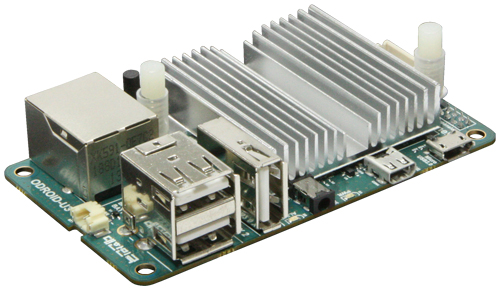If people are talking about a Jetson with big heatsinks, this may be the image they've seen:http://images.anandtech.com/doci/7905/Jetson_Pro.jpg
That's the Jetson Pro pic in Anand's article; the other two pictures in that writeup are both from Jetson K1 one without a fansink and one with one.
http://www.nvidia.com/content/tegra/automotive/images/jetson/jetson-0063-0068.jpg
That's a side shot of a Jetson Pro configuration. The lower boards are the EBBs and the T3 board is the top board, as close as I can tell.


